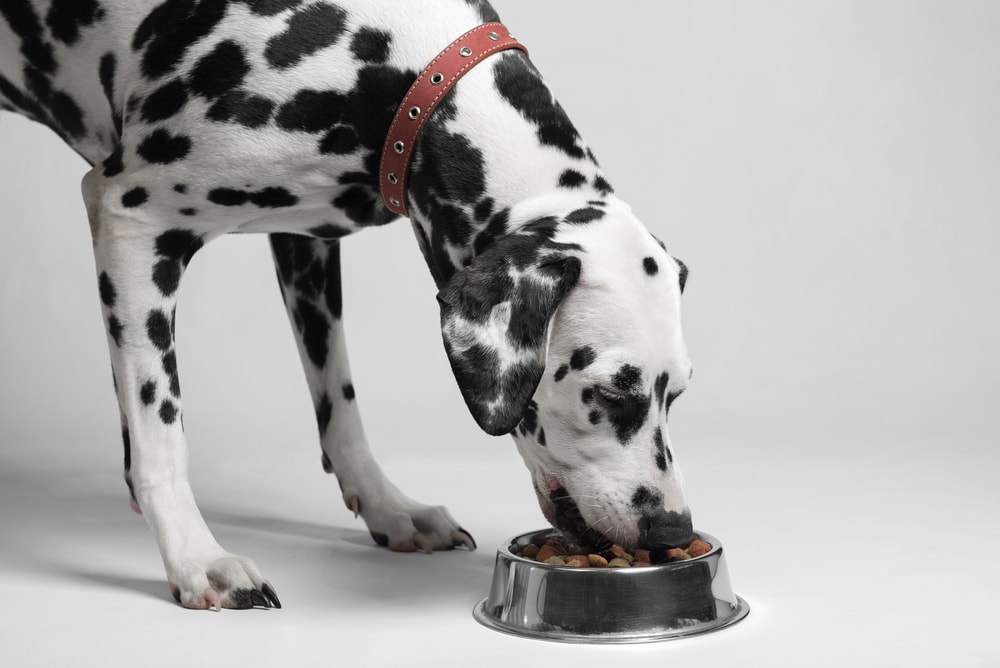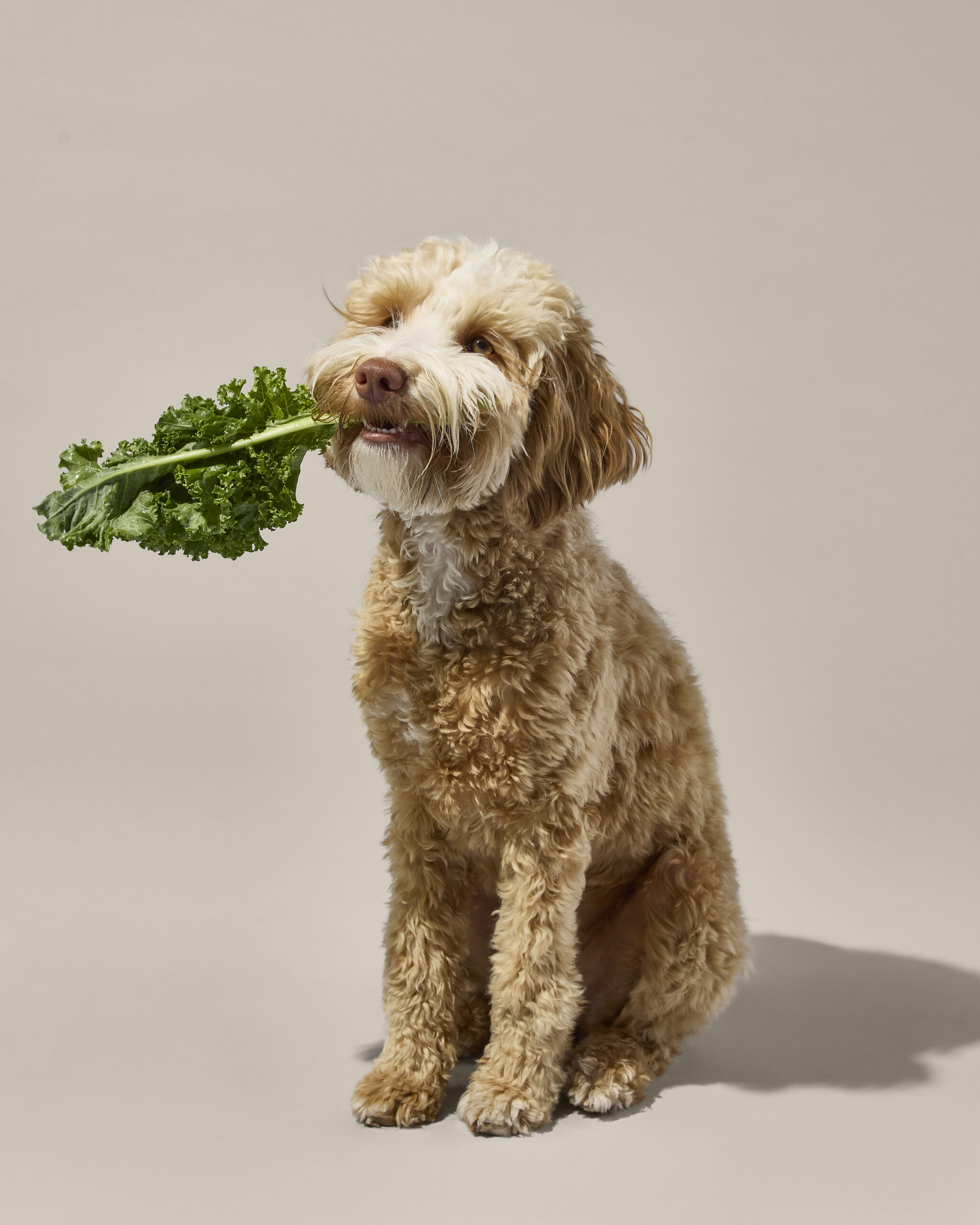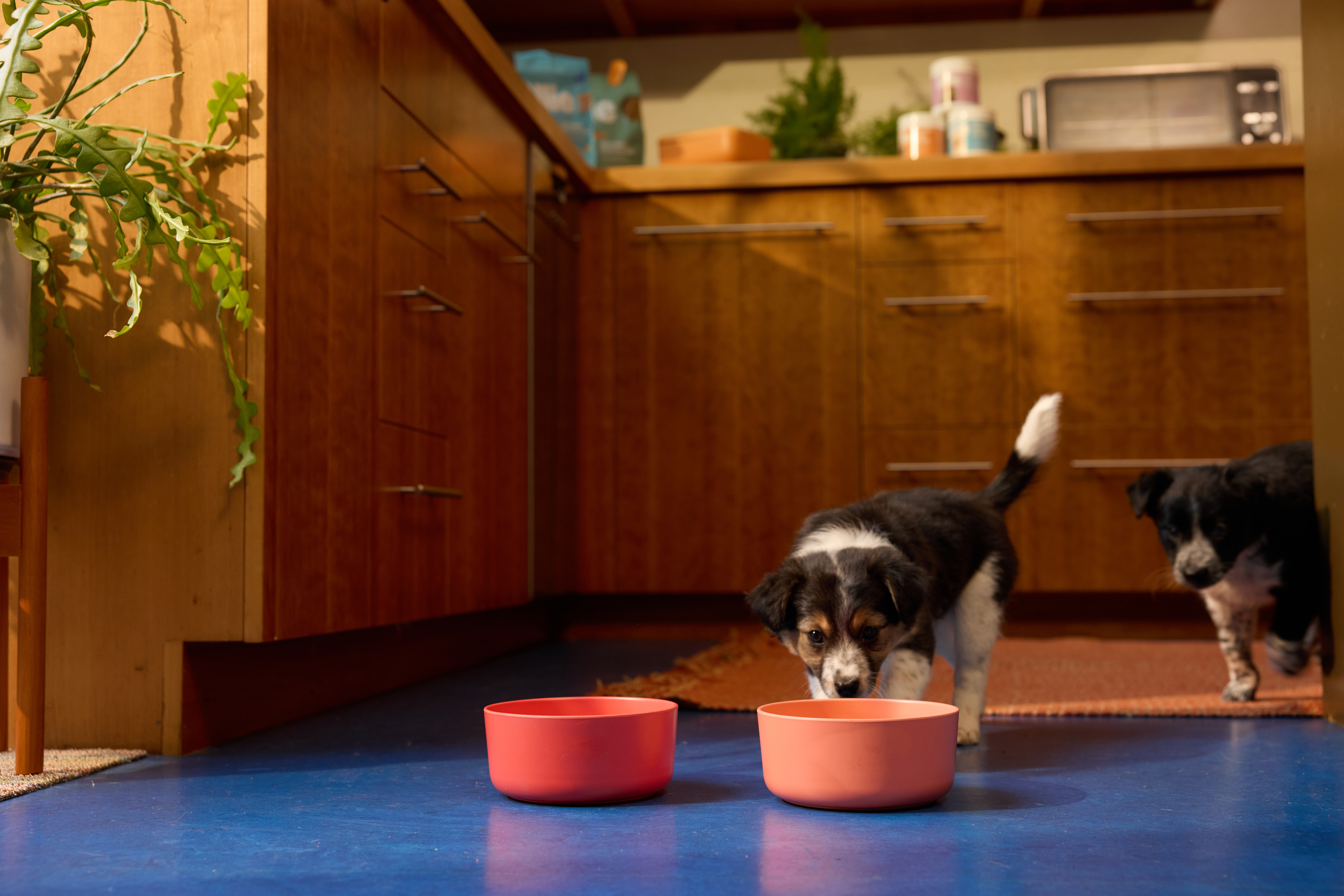Hey Ollie blog readers! We’re offering you an exclusive 60% OFF your starter box! Try now!
When we think of foods that are unhealthy for dogs, human foods like French fries or ice cream Sundaes might come to mind. But just because a kibble or canned food is labeled “dog food” and you buy it at a pet store, doesn’t mean that it’s a healthy choice. “Can dogs eat traditional dog food?” might sound like a silly question. Yes, of course, it’s technically safe for dogs to eat. But it’s not the most balanced and nutritious option, and there may be long-term risks with feeding your dog processed dog food.
“Dog Food” is Often Unhealthy
The well-known dog food brands that many of us grew up with aren’t always the best options for our pups. Gary Weitzman, DVM, President of the San Diego Humane Society and author of the book The Complete Guide to Pet Health, Behavior, and Happiness, explains that just because a dog enjoys traditional pet food, doesn’t mean it’s good for him. “I like hot dogs,” he explains, “but I’m not going to live my whole life eating them.” Weitzman says that we should take a hard look at the level of additives and processing we’ve come to accept as normal. “A premium food without additives is a healthier option,” he says.
If heavily processed dog food is the pup equivalent of human fast food, that may be the reason why so many dogs are overweight. A survey conducted by the Associate for Pet Obesity Prevention found that in 2018, 55.8 percent of dogs in the United States qualified as overweight. Obesity in dogs isn’t about looks, it’s a dangerous health condition for pooches, which can lead to arthritis, ACL tears, heart disease, and breathing conditions.
What’s Really in “Dog Food”?
The guidelines surrounding what ingredients can be included in traditional dog food like dry kibble are staggeringly more relaxed for pets than they are for humans in the United States. Meat in traditional dog food needs only to be “feed grade” not “human grade.” This means that when the animals are processed, they may be dead on arrival and can include roadkill, previously deceased farm animals, or even euthanized animals from ranches, feedlots, and even animal shelters.
Additives are often included to keep costs down and maintain shelf stability. Preservatives like Butylated Hydroxyanisole have been linked to cancer, as have food dyes like Red 40. Whatsmore, the FDA states that it “does not object to the diversion to animal feed of human food adulterated with rodent, roach, or bird excreta.” Learn more about toxins and recalls in “Is My Dog Food Safe?”
Dog Food Labels Can Be Misleading
The one thing that is critical to look for in your dog’s food is an Association of American Feed Control Officials (AAFCO). This means that the food’s formulation has been examined to ensure nutritional balance for dogs of all ages—or the food has gone through feeding trials to prove success.
Other than that? Most dog labels are marketing fluff. There are no regulations surrounding the words “premium,” “super premium,” or “gourmet.” They sound flashy, but it doesn’t mean the food is healthy for your dog. Read more about popular dog food labels here.
Are Generic Dog Foods Okay?
It might be tempting to cut costs while feeding your dog and buy generic—but this is often the worst choice for your dog’s health. In Dogs: The Ultimate Care Guide: Good Health, Loving Care, Maximum Longevity, Lowell Ackerman, DVM, Ph.D., explains, “While the labels on some generic foods say the contents are complete and balanced, the food’s nutritional benefits have not necessarily been tested on dogs. That means you don’t really know what the food is doing for your dog.” Generic foods also typically have fewer calories and are often more likely to cause stomach upset.
What’s the Best Dog Food for a Healthy Dog?
If you want to ensure your dog stays as healthy as possible without the very questionable meat found in “feed-grade” dog food, fresh, human-grade dog food is best. All of Ollie’s recipes are human-grade and made with whole foods like turkey, lentils, and kale, combined make your dog as healthy as possible from the inside out. Every recipe is formulated to meet the nutritional levels established by the AAFCO Dog Food Nutrient Profiles for All Life Stages. Plus, they’re tasty too!
The Ollie blog is devoted to helping pet parents lead healthier lives with their pups. If you want to learn more about our fresh, human-grade food, check out MyOllie.com.
Tagged As:

The nutrition your dog needs,
the food they want.

Enjoying our articles? Subscribe our Newsletters and get new articles directly to your inbox
You might also like
4 August 2025
5 MINS READ
Key Ingredients in Fresh Dog Food Explained
The right food starts with the right ingredients. Unlike highly processed kibble, which can contain fillers and low-quality by-products, fresh food focuses on transparency and quality. At Ollie, w…
by Ollie Pets
4 August 2025
6 MINS READ
Fresh Dog Food Benefits for Growing Puppies
Proper nutrition as a puppy is the foundation for a long, healthy, and happy life. Fresh, human-grade meals can support your puppy’s rapid growth, brain development, and long-term health in ways…
by Ollie Pets
4 August 2025
6 MINS READ
Choosing Specialized Dog Food: Solutions for Allergies and Sensitivities
There’s nothing more difficult than seeing your dog uncomfortable. Constant scratching, upset stomachs, or chronic ear infections can be signs that something in their diet isn’t agreeing with …
by Ollie Pets







